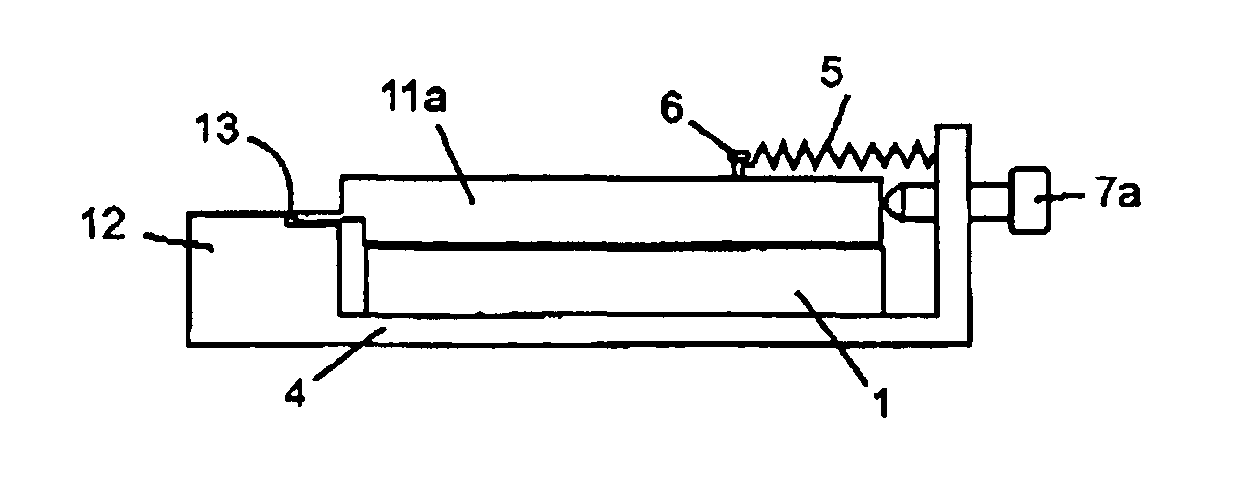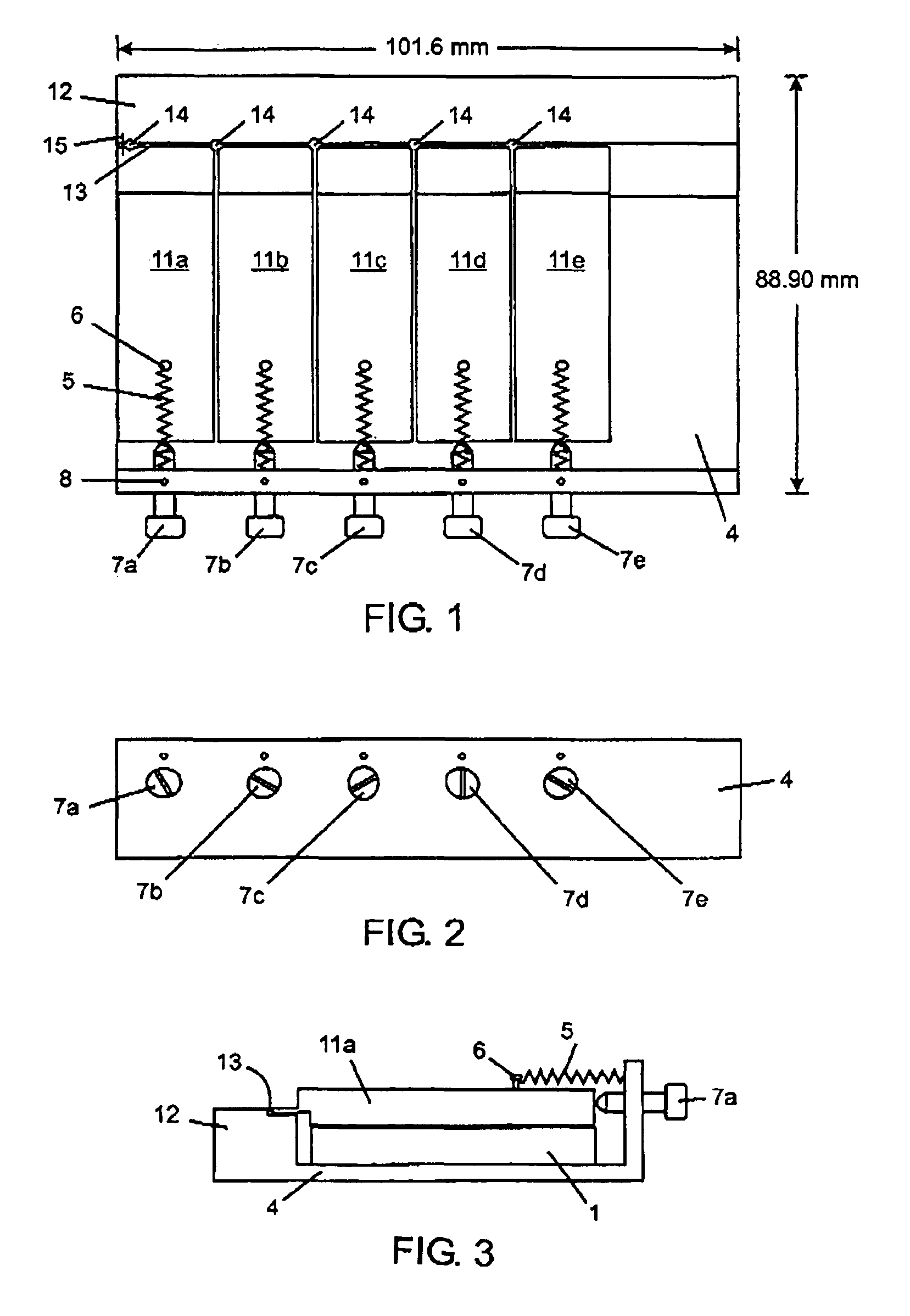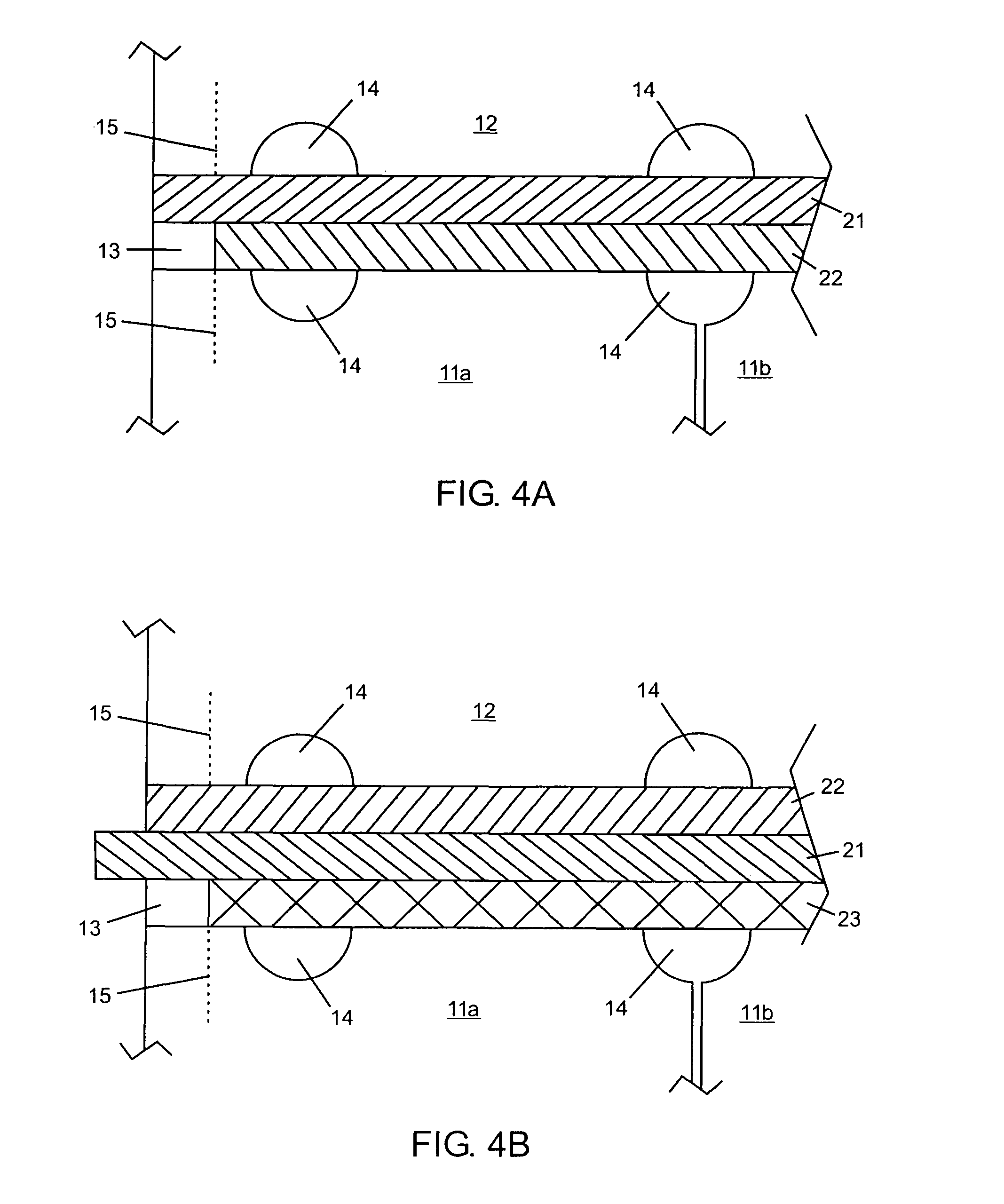Apparatus and process for stacking pieces of material
a technology of apparatus and material, applied in the direction of stacking articles, soldering apparatus, auxillary welding devices, etc., can solve the problems of unassisted manual processes, one or more sub-millimeter dimensions of pieces of material, and inconvenient stacking, etc., to achieve precise and accurate control of piece placement, efficient and effective stacking, and accurate alignment
- Summary
- Abstract
- Description
- Claims
- Application Information
AI Technical Summary
Benefits of technology
Problems solved by technology
Method used
Image
Examples
Embodiment Construction
[0030]An embodiment of an apparatus of the present invention for assembling a stack of ribbons is depicted in FIGS. 1-3. In FIGS. 1-3, all dimensions are in millimeters (mm) unless otherwise stated. Referring to FIGS. 1-3, the fixture comprises five linear ball slide assemblies 1 (only one labeled) (available from Del-Tron Precision Inc. of Bethel Conn.) on which five movable press rams 11a-e are bolted. The ball slide assemblies are bolted to base plate 4. Fixed platen 12 is an integral part of the base plate. Five torsion wire springs 5 (only one labeled) connect each of the movable rams to the base plate. The springs are bolted to the movable rams with socket head cap screws 6 (only one labeled) and to the base plate with set screws 8 (only one labeled). Five fine pitch adjustment screws 7a-e are mounted in the base plate through threaded apertures so that the tip of each fine pitch screw contacts the movable rams. The base plate, including the fixed platen, and the movable rams ...
PUM
| Property | Measurement | Unit |
|---|---|---|
| off-set distance | aaaaa | aaaaa |
| size | aaaaa | aaaaa |
| dimensions | aaaaa | aaaaa |
Abstract
Description
Claims
Application Information
 Login to View More
Login to View More - R&D
- Intellectual Property
- Life Sciences
- Materials
- Tech Scout
- Unparalleled Data Quality
- Higher Quality Content
- 60% Fewer Hallucinations
Browse by: Latest US Patents, China's latest patents, Technical Efficacy Thesaurus, Application Domain, Technology Topic, Popular Technical Reports.
© 2025 PatSnap. All rights reserved.Legal|Privacy policy|Modern Slavery Act Transparency Statement|Sitemap|About US| Contact US: help@patsnap.com



